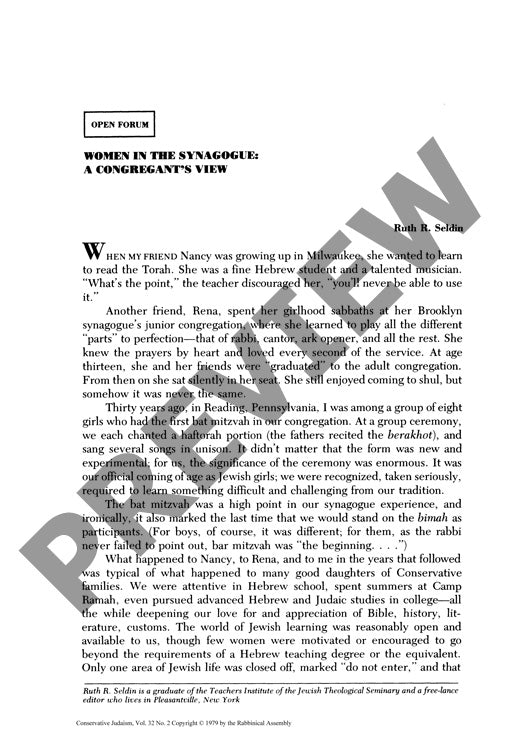Women in the Synagogue a Congregants Vie
Couldn't load pickup availability
When Conservative synagogues began counting women in the minyan in 1973, they triggered a complex transformation that challenged centuries of gender-segregated worship. Yet formal permission did not automatically create functional equality in these spaces. Through ethnographic observation and personal testimonies from New York suburban congregations, this research reveals how women confronted both external resistance and internal barriers while seeking full participation in synagogue life. Male congregants often opposed changes based on concerns about power-sharing and tradition, while women grappled with limited Hebrew education, ingrained passivity, and psychological conflicts with traditional gender roles. The transition demanded negotiation of practical challenges including role conflicts, questions of ritual attire, and masculine-oriented liturgical language. Despite these obstacles, congregations that successfully integrated women reported enhanced spiritual community and individual religious fulfillment. The qualitative analysis of personal narratives and congregational observations demonstrates that while achieving true equality requires sustained effort and commitment from both genders, the integration of women enriches the overall synagogue experience and creates more vibrant Jewish communities.

More Information
-
Physical Description
-
Publication Information
Published 1979
ISBN
-
Publication Credits
Ruth Seldin

